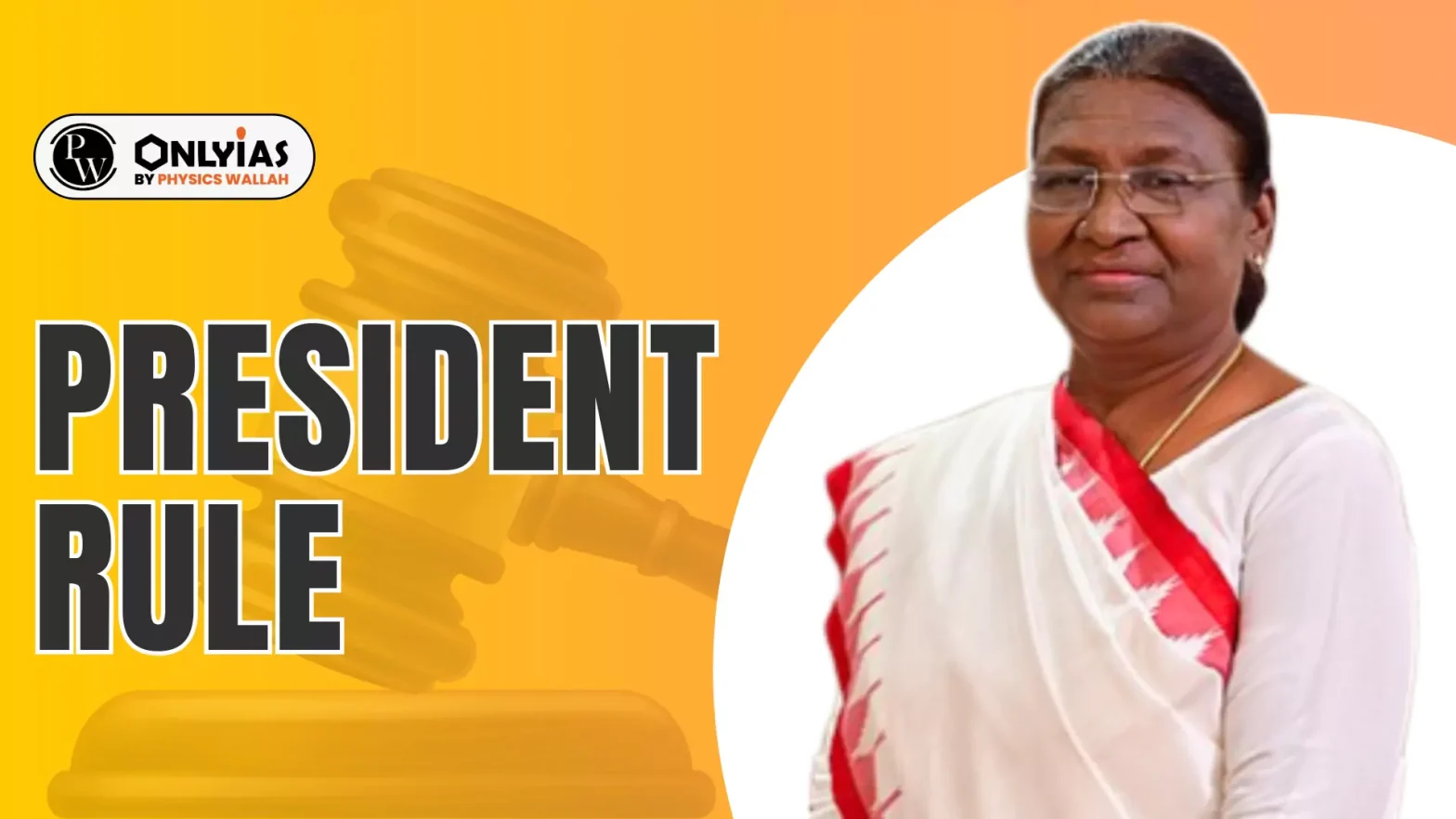President Rule is imposed when a state’s constitutional machinery fails. The recent President Rule in Manipur was declared due to the leadership crisis after N Biren Singh’s resignation.

President Rule is a constitutional provision in India under which a state government is suspended, and the central government assumes direct control of the state’s administration. The recent imposition of President Rule in Manipur has brought this provision back into the spotlight. Understanding its implications, legal framework, and historical usage is essential for comprehending Indian governance.
This page explores what is a President Rule, President Rule meaning, its constitutional provisions, reasons for its imposition, and its effects on a state. Additionally, we will discuss the historical context, including when was the first President Rule imposed in India and which state has faced President Rule the maximum number of times.
President Rule, also known as State Emergency, refers to the suspension of a state government and the direct administration of the state by the President of India through the Governor. It is imposed under Article 356 of the Indian Constitution when the state government is unable to function as per the constitutional provisions.
| President Rule Overview | |
| Aspect | Details |
| Definition | Suspension of state government and direct rule by the central government through the Governor. |
| Constitutional Article | Article 356 of the Indian Constitution. |
| Who Can Impose? | The President of India, based on the Governor’s report or other relevant information. |
| Reasons for Imposition |
|
| Duration | Initially 6 months; can be extended up to 3 years with parliamentary approval every 6 months. |
| Effects on State |
|
| Judicial Safeguards |
|
| First President Rule in India |
|
| State with Maximum President Rule |
|
| Recent Example |
|
| Revocation Process |
|
On February 13, 2025, President’s Rule was imposed in Manipur following the resignation of Chief Minister N. Biren Singh on February 9, 2025. The key reasons include:
Manipur has been placed under the President’s Rule multiple times in the past, with the February 2025 imposition marking its eleventh instance. While Article 356 is a constitutional provision, it has been subject to judicial scrutiny, particularly in the S.R. Bommai case (1994), where the Supreme Court limited its misuse for political purposes.
Since the enforcement of the Indian Constitution in 1950, the President Rule has been imposed over 130 times across various states. It was initially intended as a last-resort measure to handle constitutional crises, but its usage has evolved over time.
While some states have rarely seen it, others have experienced it multiple times due to political instability, law-and-order issues, or failure of governance.
Below are some key historical insights regarding its imposition:
President Rule is governed by Article 356 of the Indian Constitution. It states that if the President, based on a report from the Governor or other relevant information, is convinced that the governance of a state cannot be carried out according to the Constitution, he can impose President Rule in that state.
Additionally, Article 365 also allows the central government to impose President Rule if a state fails to comply with the directions issued by the Union Government.
The President of India imposes President Rule, but this decision is based on:
The imposition of President Rule must be approved by both houses of Parliament within two months.
The central government may impose President Rule in a state under the following conditions:
Once the President Rule is in effect, the following changes take place:
President Rule lasts six months initially but can be extended up to three years with parliamentary approval every six months. However, after one year, it requires:
President Rule significantly alters state governance:
Manipur holds the record for the highest number of President Rule impositions in India. Since attaining statehood in 1972, Manipur has seen President Rule more than 10 times, highlighting its history of political instability.
Other states with frequent imposition of President Rule include:
President Rule has been frequently misused to remove opposition-led state governments. Between 1966 and 1977, the Indira Gandhi led central government used Article 356 about 39 times to dismiss state governments.
The S.R. Bommai case (1994) established judicial guidelines to prevent the misuse of President Rule:
These guidelines have made it difficult for the central government to impose President Rule arbitrarily.
President Rule is a powerful constitutional provision that ensures governance continues when a state’s administration collapses. However, its frequent imposition, particularly in states like Manipur, raises concerns over federalism and democratic governance. While President Rule in Manipur was imposed due to political instability and ethnic violence, historical misuses of Article 356 have led to strict judicial safeguards.
President Rule is imposed when a state government fails to function as per the Constitution, leading to central rule under the Governor’s administration.
President Rule is imposed due to governance failure, political instability, breakdown of law and order, or inability to elect a Chief Minister.
The President of India imposes President Rule based on the Governor’s report or when the state fails to comply with constitutional provisions.
The state government is dismissed, the Governor takes charge, and the state legislature is suspended or dissolved, with Parliament assuming legislative powers.
The first President Rule in India was imposed in Punjab in 1951 due to the breakdown of the state’s constitutional machinery.
Manipur has faced the maximum President Rule impositions in India, with the central rule imposed multiple times due to political instability.
<div class="new-fform">
</div>
